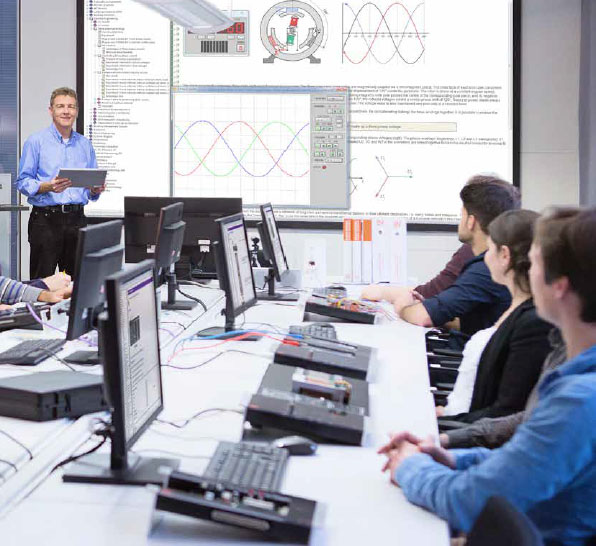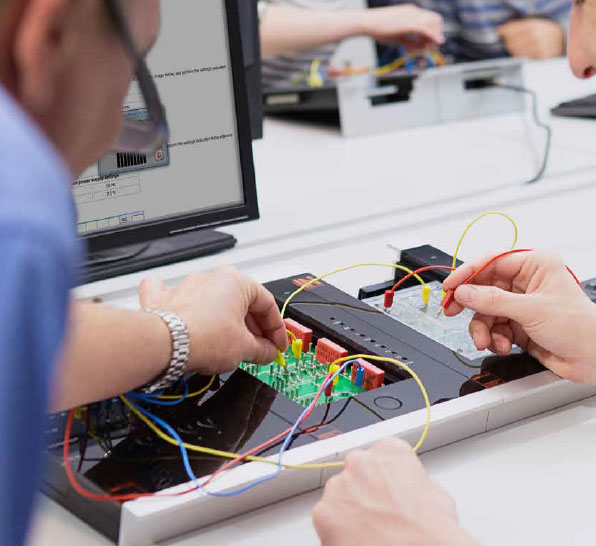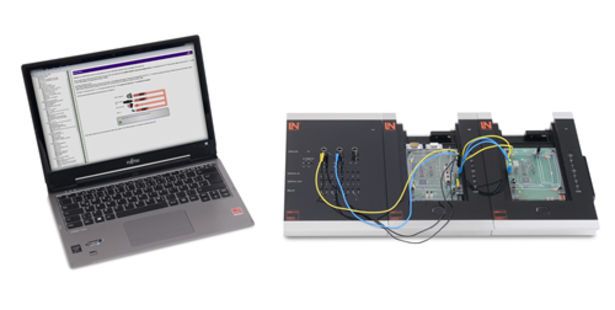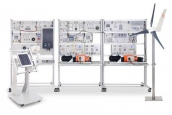UniTrain
Training with our educationally optimized systems combines the acquisition of knowledge with a high level of hands-on, vocational qualifications. This turns knowledge into skill and gives rise to the practical competence required by industry and trade in professional life.
Continuously being advanced and expanded, the UniTrain system has played a leading role for almost 15 years and has become one of the world‘s largest and most versatile multimedia training systems for aspiring electrical engineers.
Blended Learning
The ever-growing availability of the Internet has revolutionized education in recent years. Digital learning media have established themselves to become an indispensable part of flexible and individualized training concepts.
With its open multimedia courses, the UniTrain system has pursued this approach for many years, thus enabling it to be deployed in diverse learning scenarios. The multimedia courses are closely aligned with international standards to allow their integration into numerous learning management systems.
Benefits
- One system – many applications
- For the classroom, laboratory, workplace and recreation
- For independent studies, laboratory internships and teaching
- Stand-alone, in a network, or as part of a learning management system (LMS)
Features
- High-quality laboratory equipment with virtual instruments
- Basic and advanced electrical engineering, electronics & automotive technology
- Wide range of multimedia courses available
- LabSoft, an open experiment delivery platform
- Intelligent measurement interface supplies analog and digital measuring as well as control I/O
- Faults simulated by the hardware as well as tests of knowledge
One device with more than 120 measuring instruments and sources
The core is the UniTrain interface, a portable, PC-based measurement and control interface that provides the functionality of a complete electrical laboratory in a single device. Available here are more than 120 instruments and sources for measuring, controlling, programming and analyzing.
More than 130 learning programs
A combination of more than 130 learning programs with associated experimentation hardware allows all areas of electrical engineering to be explored. Besides imparting the necessary expertise, the learning programs ensure successful and safe experimentation, thereby uniting theory and practice to provide a highly efficient learning environment.
Authoring tools and administration
The LabSoft Classroom Manager included is an extensive software package for electronic management of users and learning programs. Whether it be administering educational content and users, monitoring learning progress or independently creating exercises, courses and exams, no wish goes unfulfilled.
Topics
- Electrical engineering
- Electronics
- 2-mm plug-in system
- Digital & microcomputer technology
- Installation engineering
- Power engineering
- Power electronics
- Electrical machines
- Telecommunications
- Measurement & control technology
- Automation
- Pneumatics, hydraulics
- Process technology
- Mechatronics
- Automotive technology
More Information
Science, Technology, Engineering & Mathematics
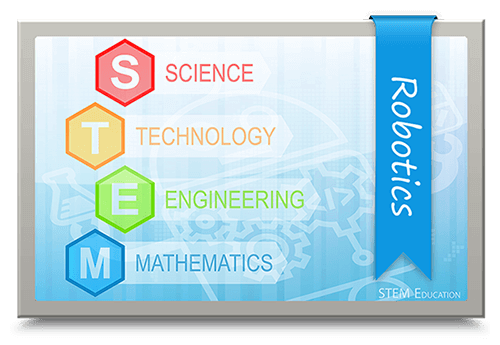
By 2018, the U.S. will have more than 1.2 million unfilled jobs in the areas of science, technology, engineering, and math (STEM) because there will not be enough qualified workers to fill them. STEM is where jobs are today and where the job growth will be in the future.
Through activity-, project-, and problem-based curriculum, our programs give students a chance to apply what they know, identify problems, find unique solutions, and lead their own learning. When students understand how their education is relevant to their lives and future careers, they get excited, and are more successful.
Students gain knowledge and skills in the following STEM areas:
- Engineering design process
- Industry standard 3D modeling software
- Using an engineer’s notebook
- Mechanisms, energy, statics, materials, and kinematics
- Development of residential and commercial properties and structures
- Project research, testing and validation techniques

